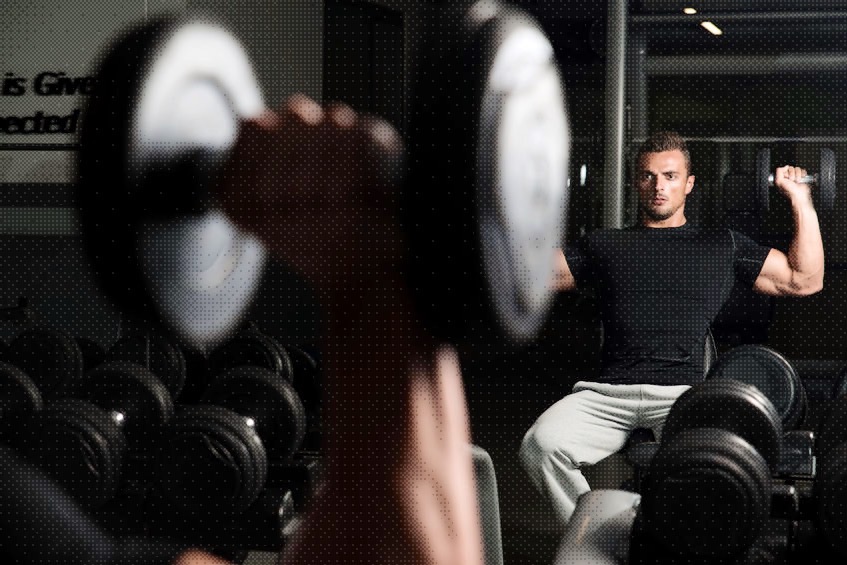The news that exercise is important isn’t exactly revolutionary. Over the last 20 years, mainstream society has embraced the idea that exercise is crucial if you expect to stay healthy.
That being said, there are plenty of guys reading this right now that exercise simply for the sake of looking good without a shirt on. And you know what? That’s totally okay.
But here’s some food for thought: having an aesthetic body is about more than just having big muscles. Having a big chest or defined arms is important, but being truly aesthetic is about showing up with the complete package. There’s a big difference between having impressive biceps and having a killer upper body.
So, this is a bit of a PSA for both kinds of weightlifters. Those of you that lift mostly for the looks? You’re going to need to develop those shoulders. And those of you looking to stay healthy for a long time? So are you. Interestingly enough, you’ll be doing a lot of the same exercises. Why? Because (like with most muscles) a healthy shoulder is a sexy shoulder.
Your Shoulders Are Overworked
No, seriously. They are. You probably don’t think about it often, but your shoulders are involved in quite a few exercises that you do on a regular basis. Incline bench press, pull-ups and even dips engage your shoulders throughout the exercise.
Now, these exercises don’t rely predominantly on your shoulder muscles. Unfortunately, if your form is even slightly off, you might end up engaging your shoulders a bit too much. When that happens, your poor shoulder is going to be worked much harder than it should be.
This over-stimulation is a problem for a few reasons. One, most guys worry more about the size of their shoulders than their range of motion. Without getting too meta about the particular kinds of sprains, strains and tears that you can experience, there are plenty of ways that you can injure your shoulder.
Prevention is Always Better than Treatment
So, how can you avoid shoulder pain/injuries? Well, you’ll probably need to re-evaluate most of your workout routine. This might seem a bit extreme to you (“But I just broke my last PR!” you’re probably thinking). Think of it this way, though: if you’re already starting to feel some shoulder pain, you need to take a step back.
First order of business: take the time to focus on proper form. Have you ever wondered why we mention form so much? Form is about more than just maximizing your muscular development. Bigger, more efficient muscles are great, but there’s another reason that form is so important to us.
Proper form prevents injuries. There’s really no way around it. If you’re not using proper form, you’ll develop faulty recruitment patterns (read: your body won’t know how to engage each muscle group properly), and you’ll end up putting yourself at risk for injury.
If you’re looking to fix your form, you’ll need to drop the weight quite a bit for a while. No PR breaking for you, my friend. Instead, you’ll be focusing on your range of motion, tweaking all those minor issues your form has.
Developing your Shoulders Properly
On the other hand, you may have great form (we’re so proud of you, by the way). If that’s the case, but you’d still like to do something to minimize any potential injuries, it’s time you started working out those shoulders the right way.
If you’ve already incorporated dedicated shoulder exercises into your workout routine, you’re halfway there. Doing the right exercises is crucial when it comes to truly strengthening these muscles. Military press is always a great place to start. So are lateral raises (although don’t go crazy with the weight here). Remember that your shoulders can actually be pretty delicate. Pushing yourself to lift tons of heavy weight can actually do more harm than good in this case.
Of course, that’s only part of the solution. To really develop your shoulders and maximize your potential, you’re going to have to stretch. That’s right. As lame as shoulder stretches might seem, there’s no denying that they help reduce injuries.
Mobility isn’t just important; it’s everything if you expect to stay injury-free for any period of time. Oh, and for the record: don’t stretch before weightlifting. Static stretching has actually been shown to increase your likelihood of injury if performed before an exercise.
If you’re wondering what our favorite stretch is, we’d have to say it’s the doorway stretch. Put your hands on the edges of a doorway and stretch your body forward. Not only have you probably already done this stretch in the past, but it’s easy to incorporate into your daily life.
None of this is that sexy. It’s definitely not that visually impressive. But you know what? It beats getting an injury.















-300x200.jpg)







-300x169.jpg)


